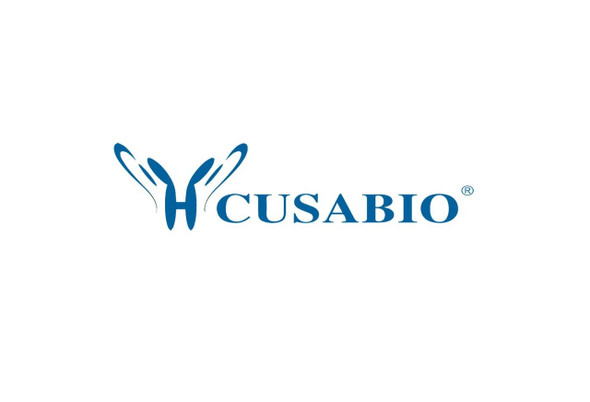Cusabio Virus & Bacteria Recombinants
Recombinant Oryza sativa subsp. japonica Mitogen-activated protein kinase 5 (MPK5) | CSB-EP607476OFG
- SKU:
- CSB-EP607476OFG
- Availability:
- 3 - 7 Working Days
Description
Recombinant Oryza sativa subsp. japonica Mitogen-activated protein kinase 5 (MPK5) | CSB-EP607476OFG | Cusabio
Alternative Name(s): Benzothiadiazole-induced MAP kinase 1 MAP kinase 2 Multiple stress-responsive MAP kinase 2 OsBIMK1 OsMAP1 OsMAPK2 OsMAPK5 OsMPK3 OsMSRMK2 BIMK1, MAPK2, MAPK5, MPK3, MSRMK2
Gene Names: MPK5
Research Areas: Others
Organism: Oryza sativa subsp. japonica (Rice)
AA Sequence: MDGAPVAEFRPTMTHGGRYLLYDIFGNKFEVTNKYQPPIMPIGRGAYGIVCSVMNFETREMVAIKKIANAFNNDMDAKRTLREIKLLRHLDHENIIGIRDVIPPPIPQAFNDVYIATELMDTDLHHIIRSNQELSEEHCQYFLYQILRGLKYIHSANVIHRDLKPSNLLLNANCDLKICDFGLARPSSESDMMTEYVVTRWYRAPELLLNSTDYSAAIDVWSVGCIFMELINRQPLFPGRDHMHQMRLITEVIGTPTDDELGFIRNEDARKYMRHLPQYPRRTFASMFPRVQPAALDLIERMLTFNPLQRITVEEALDHPYLERLHDIADEPICLEPFSFDFEQKALNEDQMKQLIFNEAIEMNPNIRY
Source: E.coli
Tag Info: N-terminal 10xHis-tagged and C-terminal Myc-tagged
Expression Region: 1-369aa
Sequence Info: Full Length
MW: 48 kDa
Purity: Greater than 85% as determined by SDS-PAGE.
Relevance: Involved in disease resistance and abiotic stress tolerance signaling pathways. Acts as a positive regulator of drought, salt and cold tolerance. Negatively modulates pathogenesis-related (PR) gene expression and broad-spectrum disease resistance. Functions downstream of CPK18 in a signaling pathway that represses defense gene expression and negatively regulates resistance to rice blast fungus. Phosphorylated by CPK18 at Thr-14 and Thr-32 and activated independently of MAP kinase kinase (MKK) phosphorylation
Reference: "Isolation of novel rice (Oryza sativa L.) multiple stress responsive MAP kinase gene, OsMSRMK2, whose mRNA accumulates rapidly in response to environmental cues." Agrawal G.K., Rakwal R., Iwahashi H. Biochem. Biophys. Res. Commun. 294:1009-1016(2002)
Storage: The shelf life is related to many factors, storage state, buffer ingredients, storage temperature and the stability of the protein itself. Generally, the shelf life of liquid form is 6 months at -20?/-80?. The shelf life of lyophilized form is 12 months at -20?/-80?.
Notes: Repeated freezing and thawing is not recommended. Store working aliquots at 4? for up to one week.
Function: Involved in disease resistance and abiotic stress tolerance signaling pathways. Acts as a positive regulator of drought, salt and cold tolerance. Negatively modulates pathogenesis-related (PR) gene expression and broad-spectrum disease resistance
Involvement in disease:
Subcellular Location: Nucleus, Cytoplasm
Protein Families: Protein kinase superfamily, CMGC Ser/Thr protein kinase family, MAP kinase subfamily
Tissue Specificity: Expressed in roots, stems and panicles, and at lower levels in leaves.
Paythway:
Form: Liquid or Lyophilized powder
Buffer: If the delivery form is liquid, the default storage buffer is Tris/PBS-based buffer, 5%-50% glycerol. If the delivery form is lyophilized powder, the buffer before lyophilization is Tris/PBS-based buffer, 6% Trehalose, pH 8.0.
Reconstitution: We recommend that this vial be briefly centrifuged prior to opening to bring the contents to the bottom. Please reconstitute protein in deionized sterile water to a concentration of 0.1-1.0 mg/mL.We recommend to add 5-50% of glycerol (final concentration) and aliquot for long-term storage at -20?/-80?. Our default final concentration of glycerol is 50%. Customers could use it as reference.
Uniprot ID: Q10N20
HGNC Database Link: N/A
UniGene Database Link: UniGene
KEGG Database Link: KEGG
STRING Database Link: STRING
OMIM Database Link: N/A









